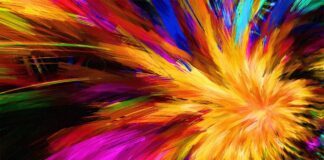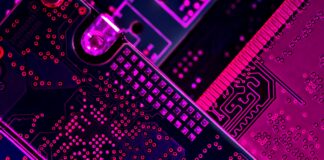Artificial Intelligence (AI) is transforming various industries, and one area where its impact is becoming increasingly significant is in the realm of dance class streams. As AI in dance class streams continues to evolve, it is reshaping how dance classes are delivered, experienced, and personalized by both instructors and students. AI in dance class streams is not just about enhancing the technical aspects of streaming but is also revolutionizing how instructors interact with students, how classes are structured, and how students engage with the content. In this article, we will explore the top ten important things you shouldn’t miss about how AI will change dance class streams, offering a thorough examination of its potential and transformative power in the dance education sector.
1. AI Will Enhance Personalization for Dance Class Participants
One of the most exciting aspects of AI in dance class streams is the ability to personalize the learning experience for individual students. Traditional dance classes often require students to adapt to the pace and structure set by the instructor, but AI in dance class streams can create a more tailored approach. By analyzing a student’s performance, AI can adjust the difficulty level of the exercises, suggest corrections in real time, and provide customized feedback based on individual progress.
For example, AI-powered platforms can track a student’s movements using motion capture technology, identifying areas where improvement is needed. This allows instructors to provide more individualized attention, even in a virtual environment. As a result, students will have a more engaging and effective learning experience, with progress being measured and addressed in real time.
2. AI Will Improve Real-Time Feedback and Correction in Dance Classes
Real-time feedback is crucial for dancers, especially when learning complex movements or techniques. Traditionally, this feedback requires the instructor to be physically present, but AI in dance class streams can provide immediate, accurate feedback on students’ movements. By using AI-driven motion detection and analysis, platforms can identify whether a student is executing a step or pose correctly and provide suggestions for improvement.
AI can analyze the student’s body alignment, posture, and precision of movement, offering instant corrections without the need for a live instructor. This not only enhances the learning process but also allows for more focused attention on specific aspects of dance that may otherwise go unnoticed in large class settings. For dancers practicing from home, AI in dance class streams offers an invaluable tool for refining their skills independently.
3. AI Will Enable Scalable Virtual Dance Classes with Global Reach
With the rise of virtual learning, AI in dance class streams will make it easier for dance schools and instructors to scale their offerings and reach a global audience. Through AI-driven platforms, instructors can host live and on-demand classes that can be accessed from anywhere in the world, creating opportunities for students to learn from top-tier professionals without geographical limitations.
Moreover, AI can help manage large numbers of participants by automating class registration, attendance tracking, and providing automated reminders. This scalability allows dance instructors to reach a far larger audience, increasing their ability to teach diverse students from all corners of the globe. The integration of AI also allows instructors to adjust the content and format based on the preferences and needs of their students, ensuring a high-quality experience for everyone.
4. AI Will Assist with Dance Choreography Creation and Innovation
AI in dance class streams is not just about improving the delivery of classes; it is also contributing to the creative process of choreography. AI algorithms can assist choreographers in generating new dance routines by analyzing vast amounts of existing dance movements and patterns. By identifying trends and successful movement combinations, AI can propose new ideas for choreography, helping dancers and instructors push creative boundaries.
AI can suggest innovative combinations, analyze popular dance styles, and even generate unique dance sequences based on a choreographer’s preferences. This opens up new avenues for creativity and allows instructors and dancers to experiment with different styles and techniques, making AI in dance class streams a valuable tool for both performance and education.
5. AI Will Offer Tailored Fitness and Dance Programs
Fitness and dance often go hand in hand, particularly for dancers who must maintain physical fitness to support their craft. AI in dance class streams can create personalized fitness and conditioning programs tailored to an individual’s needs. By using AI to analyze a dancer’s physical capabilities and progress, customized exercise routines can be suggested to enhance strength, flexibility, endurance, and injury prevention.
For example, AI can track a dancer’s range of motion, flexibility, and strength, adjusting the fitness program based on real-time data. Students will have the opportunity to follow a fitness plan that aligns with their specific goals and current physical condition, leading to improved performance in their dance classes. This integration of fitness and dance training will become an essential part of AI in dance class streams, providing a holistic approach to dance education.
6. AI Will Provide Enhanced Collaboration Tools for Group Dance Classes
Group dance classes require coordination, synchronization, and communication. With AI in dance class streams, collaboration between dancers and instructors will become more seamless. AI can help instructors manage group dynamics by analyzing individual performances and identifying areas where students may be struggling to sync up with others.
Through AI-powered video analysis, instructors can quickly pinpoint where one dancer’s timing may be off or where a group’s movements are not in sync. The system can then suggest adjustments for the group, helping them work together more cohesively. This real-time collaboration enhancement ensures that group dance classes remain productive and efficient, even in virtual or hybrid environments.
7. AI Will Make Dance Education More Inclusive
AI in dance class streams has the potential to make dance education more inclusive by accommodating students with varying abilities and backgrounds. AI can be programmed to cater to dancers with physical disabilities, providing modified exercises and techniques that align with their unique needs. For example, AI can adapt choreography to be more accessible for students with limited mobility or suggest exercises to improve muscle tone and coordination for those with physical impairments.
Furthermore, AI can provide accessibility features such as closed captioning and translation services for students who are deaf, hard of hearing, or speak different languages. This inclusivity opens the doors of dance education to a wider range of participants, ensuring that everyone, regardless of ability or background, can engage with dance learning.
8. AI Will Streamline Dance Class Scheduling and Management
Managing a dance studio, whether it’s virtual or in-person, involves a significant amount of administrative work, from scheduling classes to managing student progress. AI in dance class streams can streamline these tasks, making it easier for instructors and administrators to run their programs. AI-driven scheduling systems can automatically find the best times for classes based on student availability, minimizing conflicts and ensuring that maximum participation is achieved.
In addition, AI tools can automate payment processing, track attendance, and send reminders to students. For instructors, this means more time spent focusing on teaching and less time spent on administrative tasks. For students, it means a smoother, more convenient experience when booking and attending classes.
9. AI Will Analyze Dance Performance Data to Track Progress
Tracking a dancer’s progress is essential to their growth, and AI in dance class streams will make this process more detailed and insightful. By capturing data from students’ movements, AI can provide dancers with a detailed analysis of their performance, highlighting improvements and areas for growth. This data can include information on timing, precision, movement quality, and overall technique.
Dancers can track their progress over time, comparing performances and receiving personalized recommendations for continued development. This data-driven approach allows for more precise goal setting and performance evaluation, ensuring that students receive the most effective feedback possible, even in an online learning environment.
10. AI Will Expand Access to Dance Education in Underserved Areas
One of the most impactful benefits of AI in dance class streams is its ability to expand access to dance education in underserved areas. In many parts of the world, dance education may not be readily available due to a lack of facilities, qualified instructors, or financial resources. AI in dance class streams can bridge this gap by offering virtual classes that anyone with an internet connection can access.
AI-powered platforms can offer low-cost or free access to dance lessons, helping students in remote or disadvantaged areas gain access to quality dance education. Additionally, AI can help local instructors by providing them with tools to improve their own teaching methods and better serve their communities. This democratization of dance education ensures that everyone, no matter where they are located, has the opportunity to explore and grow their passion for dance.
Conclusion
The integration of AI in dance class streams is a game changer that will revolutionize dance education and performance in ways that were previously unimaginable. From personalized learning experiences to real-time feedback and global accessibility, AI in dance class streams holds the potential to enhance the dance education experience for both instructors and students. As technology continues to evolve, it is clear that AI will play an increasingly important role in shaping the future of dance classes, making them more efficient, engaging, and accessible. Embracing AI will be crucial for those looking to stay at the forefront of the dance education revolution and deliver high-quality, personalized learning experiences to students across the globe.














